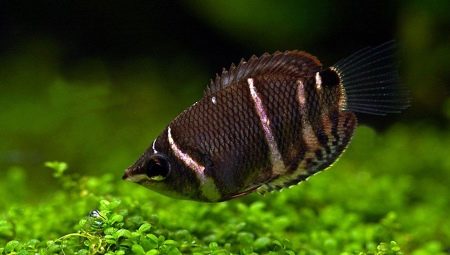Gurami is an unpretentious fish that even a beginner aquarist can handle. However, this does not apply to the variety of chocolate gourami, and it is better for an inexperienced fish lover to bypass this species. Caring for chocolate gourami has a number of difficulties, and its cultivation is always best trusted only by a professional.
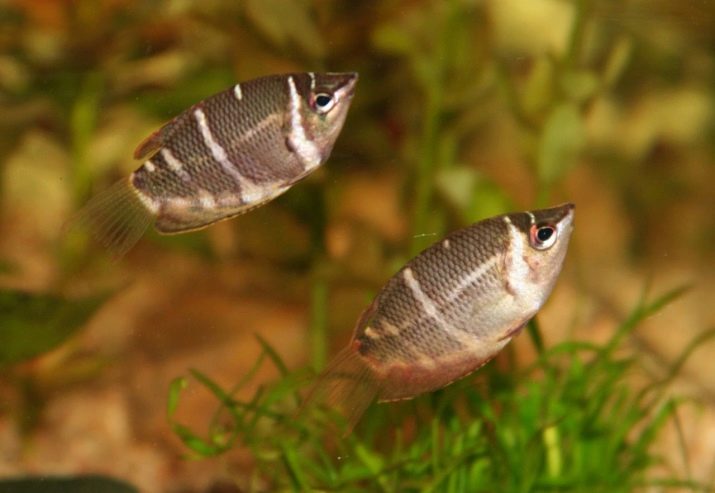
Description
Chocolate gourami has a reddish-brown or chocolate body color and slightly casts a greenish tint. Throughout the body, pale yellow transverse stripes are observed, and the anal fin is decorated with a yellow frame. The length of the individual is not more than 5 cm. The body of the fish is oval, with a small head and a pointed outstretched mouth.
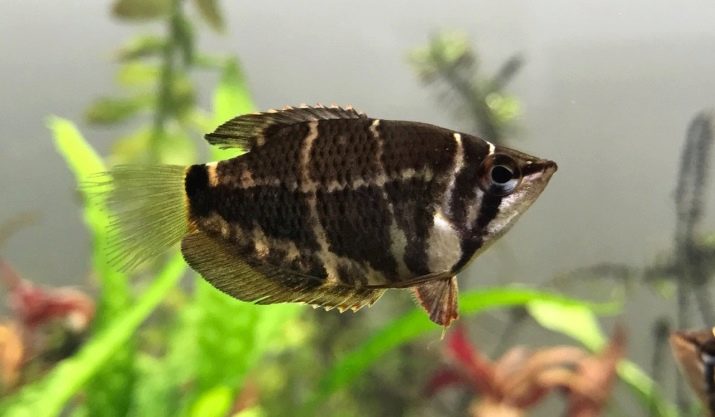
Care and maintenance
This is the most difficult type of gourami to care for.
The fact is that in nature this individual lives in stagnant peat waters and swamps with an abundance of algae and humic acid content from decayed plants.
Such water has a dark color, in addition, usually such ponds are located in woodlands, and dense coastal trees hide the water from sunlight, leaving the pond in the shade. These are ideal living conditions for chocolate gourami.

But is it possible to organize a similar environment at home? Only a professional aquarist can cope with this, so this fish is rarely taken to pet stores. If an aquarium fish lover ventured on such a demanding pet, then It is important to observe the following conditions of detention.
- The aquarium should be densely populated by plants. It is good if the tank contains both bottom and floating algae. A good addition would be beech or oak, which in the process of decomposition enrich the water with bacteria useful for gourami.
- Add peat extract to the aquarium.You can put it in the filter.
- Fine gravel or sand is suitable as soil. These fish are indifferent to the type of shelters, it can be both live stumps and driftwood, as well as artificial caves, pots, houses.
- Use an internal filter in an artificial pond so that there is no strong movement of water in which the chocolate gourami will feel uncomfortable.
- Recommended water temperature - 27-30 degrees, pH from 6.2 to 6.8, hardness - 1.5.
- The aquarium should be with a lid so that the air above the surface retains heat. If the temperature of water and air is very different, then pets can catch a cold.
- Pick up dim diffused lighting devices.
- Change 10% of water regularly, monitor the condition of animals and plants in the aquarium - for gourami, infection with bacterial infections and fungus is typical.
- Feed your pet frozen or live food. Bloodworms, cyclops, tubule, daphnia will do. Feeding with dry ready-made feeds is possible, although at first gourami may refuse such an unusual diet. Carefully monitor the dosage, this fish can not be overfed. If in doubt about the size of the portion, it is better not to feed the gourami than to overfeed.
- Before buying an individual, ask the seller about its origin. If a fish is bred in artificial conditions, then it is less demanding on maintenance than its wild relative.
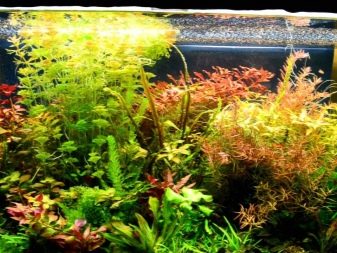

Compatibility
This variety can be kept both individually and in a pack. In the natural environment, fish mostly lead a solitary life, but unusual relationships can develop in the aquarium group. As in any pack, a leader appears here, guarding his territory and chasing other members of the group. Some aquarists have noticed that the leader becomes the individual with the brightest colors.
Another behavior can be observed in the group of fish: the leader lays on one side, and his “subordinates” swim up to him and lightly touch his mouth. This is not a showdown or a kind of "rebellion", it is just a ritual of recognition of the leader. It is recommended to buy a school of fish of 6 or more.

As neighbors for chocolate gourami, small and peace-loving fish are suitable, that is, those who do not begin to drive the gourami around the aquarium or interfere with it. Often these fish get along well with zebrafish, tetras, Kubotai microassay, cuneiform spotting, some loaches (e.g. Acantophthalmus Kühl). Aquarists other varieties of gourami are not recommended to be added to the chocolate look.

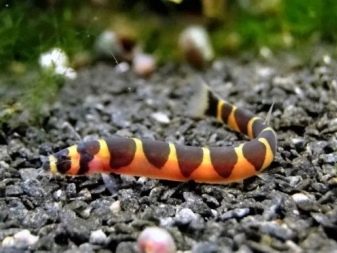
Breeding
Before you start breeding chocolate gourami, you need to learn to distinguish between females and males. Males are characterized by a larger size. Their dorsal fin has an angle, and the yellow framing on the anal and caudal fin is more distinct than in females. Males have a brighter color. They have a straight throat, while females have a pointed throat. Often, in females on the caudal fin, a black spot appears. Sexually mature fish are considered at 6-8 months.
For spawning, an aquarium with a volume of at least 50 liters is suitable. There are no preferences for soil, but it is better to populate the reservoir with plants.
So, you can plant in the spawning floating grassy algae, for example, water fern or richchia.
During spawning, it is better not to disturb individuals, therefore it is advisable to cover the front wall of the aquarium.
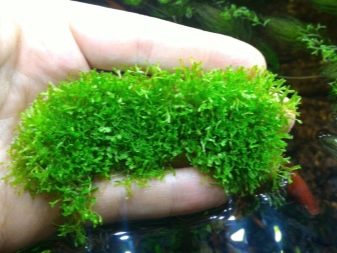
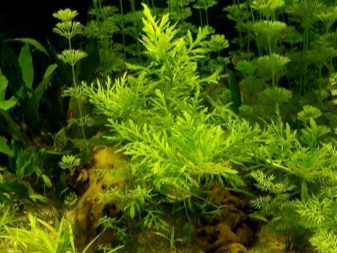
For spawning, water with a temperature of 28-30 degrees, hardness not higher than 3 and acidity 5-6 is suitable. Do not pour too much water, just fill the spawning ground at a level of 15 cm. At first, the selected producers are kept separate for a couple of weeks and fed abundantly. After that, the female and male are planted in the prepared aquarium.
Spawning can be carried out to the bottom or into small nests of foam at the surface. Each egg is approximately 1.5 mm in diameter.
They are heavy and in some incredible way they themselves fall precisely into the nest, and not just to the bottom of the aquarium.
The male fertilizes eggs, after which the female collects eggs in her mouth. Her lover also selects future cubs and spits them out towards the female. Then the lady hatches eggs in her mouth for a couple of weeks, at this time the male guards her. Sometimes it is possible to draw so much caviar that it does not fit in the mouth, but over time the female still tries to fit every egg into herself. In total, about 40 eggs are placed in her mouth.
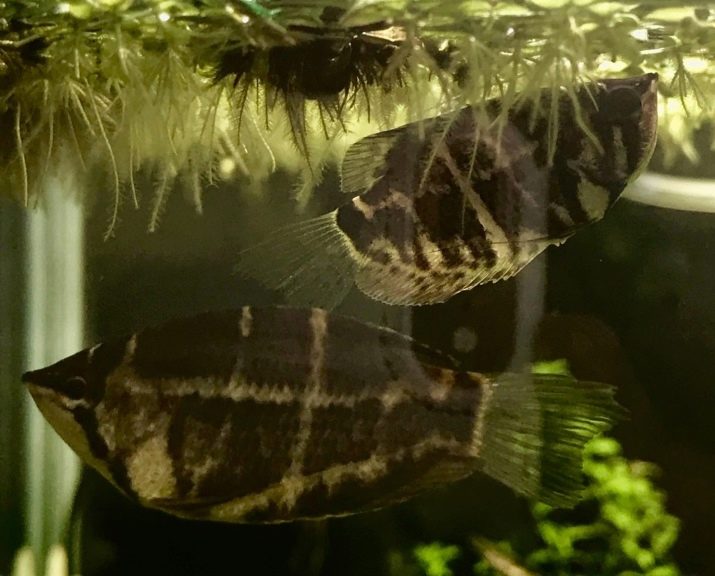
When the fry form, the female spits them out. The size of each cub is approximately 5 mm. The offspring are dark, each individual is clearly visible. Basically, babies take shelter in foliage or stay near the surface of the water. As starter food, fry can be offered nauplii of brine shrimp, cyclops, microworm. They are often fed, but dosed. The water level for keeping fry should be no more than 10 cm.
Until the labyrinth organs form in the individuals and they begin to gasp for air, the water in the aquarium does not change. The favorable temperature for keeping babies is 30 degrees. In cooler conditions, they can catch a cold.
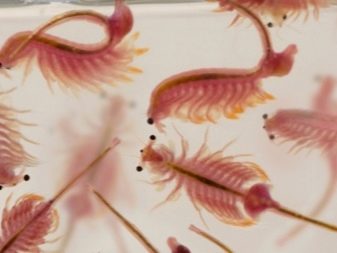
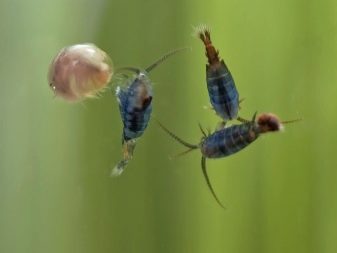
You will learn the rules for keeping gourami in the aquarium from the video below.
